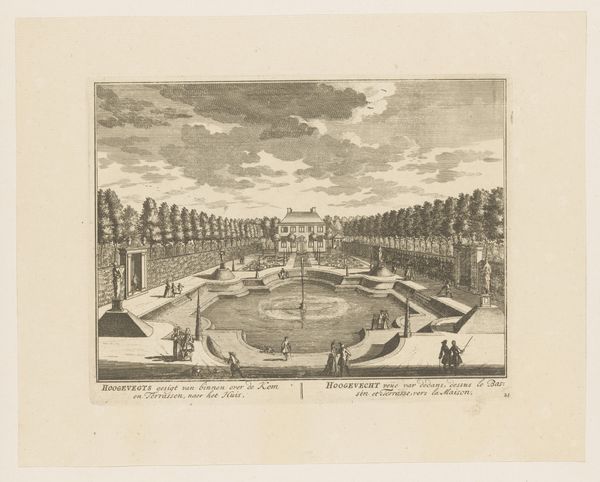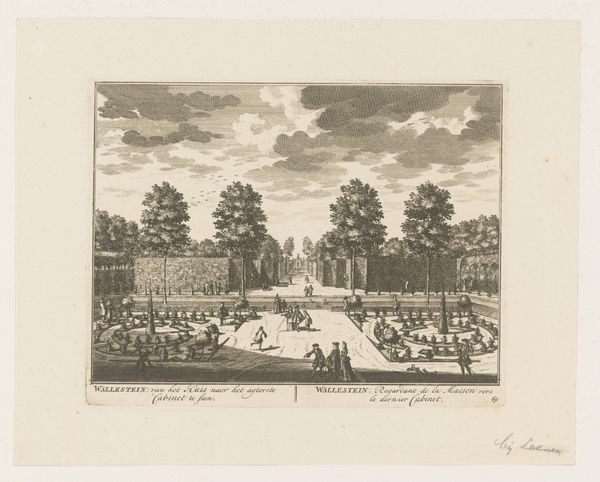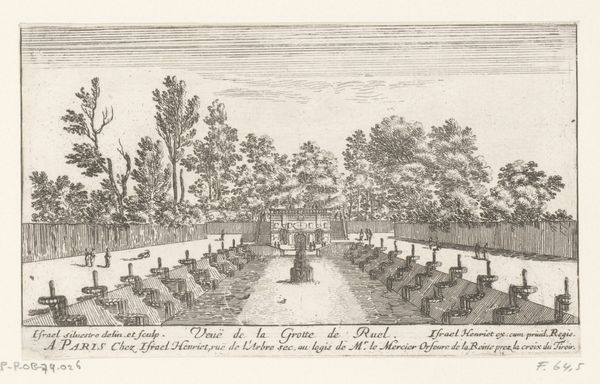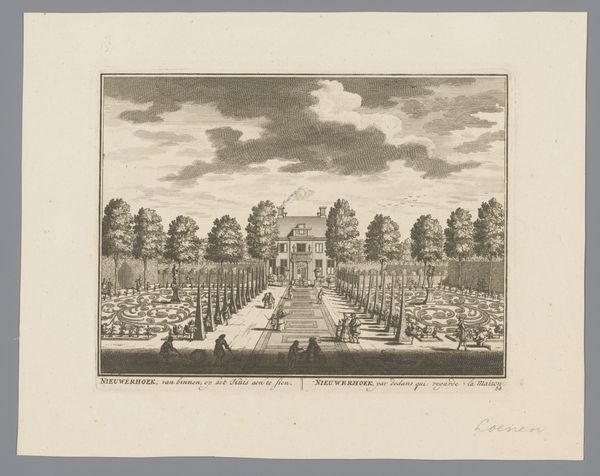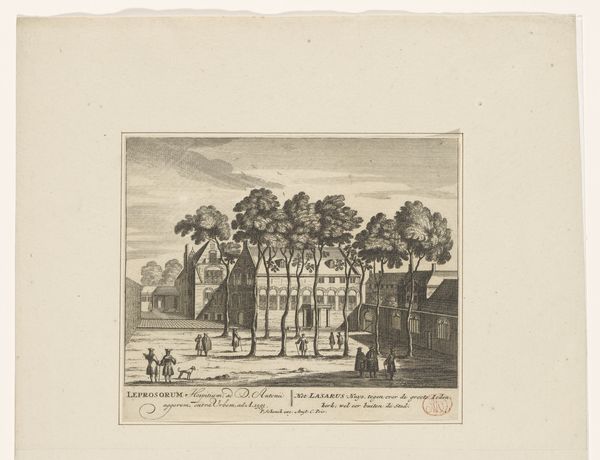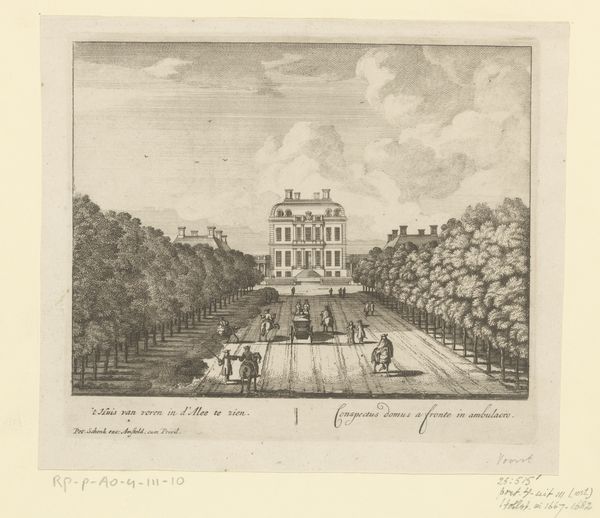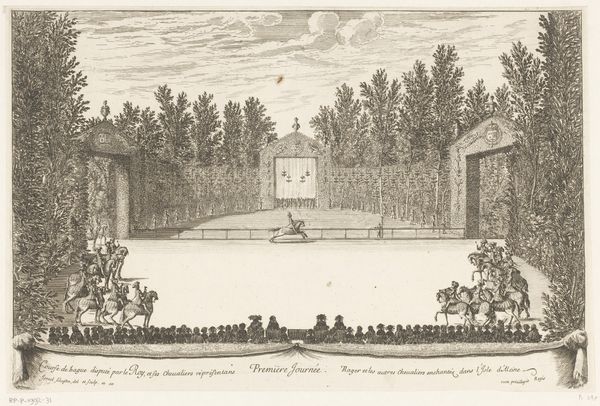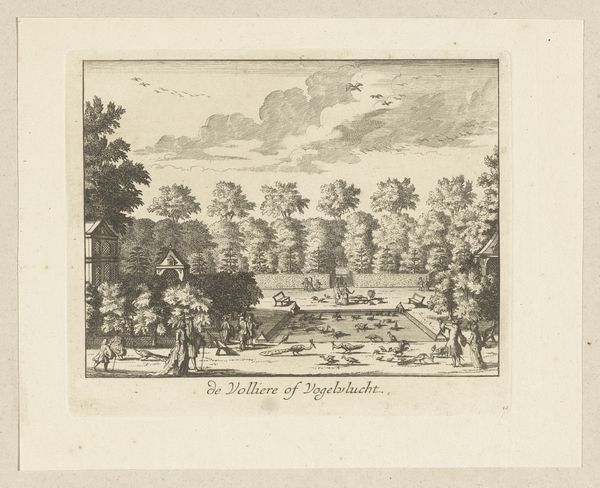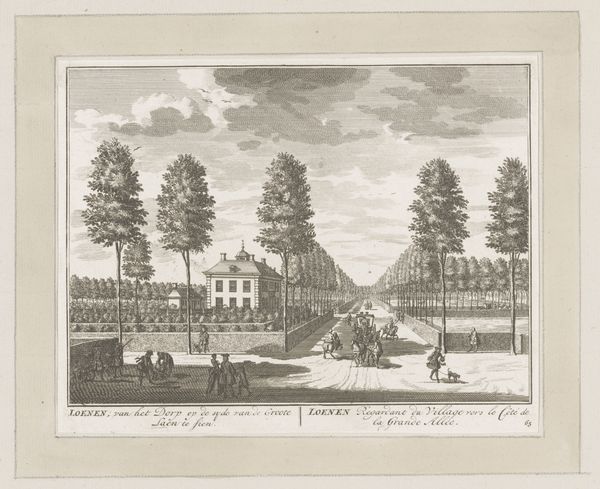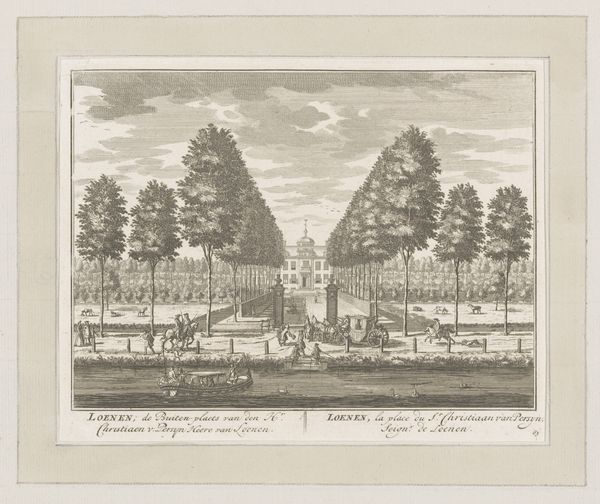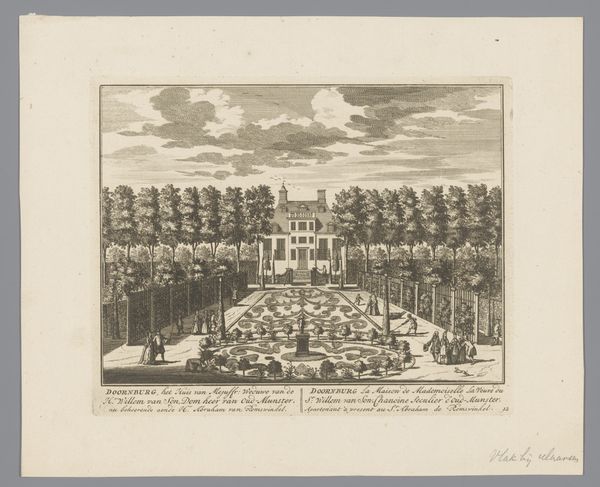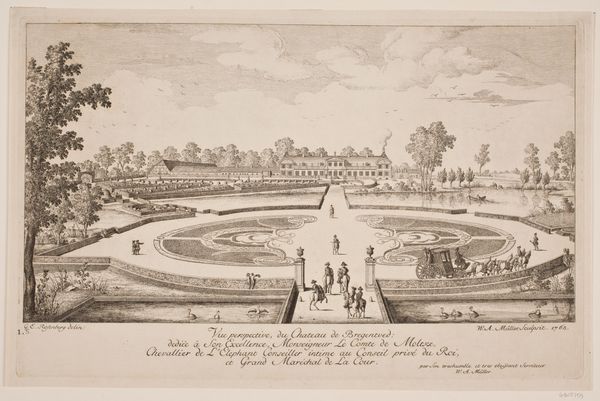
print, etching
#
baroque
# print
#
etching
#
landscape
#
etching
#
cityscape
#
history-painting
Dimensions: 148 mm (height) x 246 mm (width) (plademaal)
Editor: Here we have Bartholomæus Roque's etching from the 1740s, "Charlottenlund tilforn Gyldenlund," depicting a palace and grounds. I'm struck by the formality of it all, the rigid geometry of the garden and the rather self-conscious poses of the figures. What do you see in this piece beyond the aesthetic? Curator: What interests me here is how this print served as a piece of visual propaganda, constructing an image of power and civility. It's not simply a depiction of Charlottenlund Palace. Consider the socio-political function of representing the palace, once called Gyldenlund. Who was it meant to impress? Editor: Presumably, other nobles or perhaps even foreign dignitaries? To show off the wealth and sophistication of the Danish court? Curator: Exactly. Etchings like this circulated widely. Think about the Baroque obsession with spectacle and control. This image, distributed as a print, played a role in shaping public perception of the monarchy. The formal garden, the orderly architecture - they all signify a triumph of reason and order, key virtues associated with good governance during this period. Notice how the very landscape is managed and controlled. How might this representation reflect on the perception of absolute monarchies and power in 18th century? Editor: It makes you wonder how accurate this image actually is. Is it reality or wishful thinking, crafted to enhance the reputation? The figures look staged, more like ornaments in the landscape. Curator: That is an astute observation. It highlights the role of art in constructing idealized visions of the ruling elite. Were the nobles actually using this place? Was it intended to show the place, or to create the sense that it should be respected by those that saw this etching? Even in the 'documentary' landscapes we have to remember that the politics are embedded into them. Editor: So, it’s less a window into the past and more of a carefully constructed narrative. I'll definitely look at these landscapes in museums differently now. Thanks! Curator: Indeed, recognizing the interplay between art and political agendas opens a whole new way to look at art. A vital lesson, I believe!
Comments
No comments
Be the first to comment and join the conversation on the ultimate creative platform.
